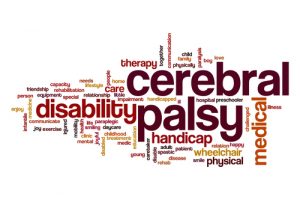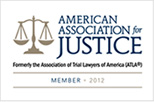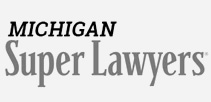
Cerebral Palsy Birth Injury
Cerebral palsy is a devastating birth injury. It’s a lifelong neurological condition that affects the parts of the brain responsible for muscle function. It typically stems from complications that occur during pregnancy, birth, or shortly following birth. The diagnosis is even more heartbreaking for families who learn that the complication could (and should) have been prevented. The damage done to a child’s developing brain is irreversible.
Causes
Brain damage can occur for a variety of reasons and cause a wide range of life-changing side effects. Causes of cerebral palsy include:
- fetal or maternal distress, such as lack of oxygen during birth, that goes unaddressed during delivery because of poor monitoring of mother’s and/or baby’s vitals
- oxygen deprivation resulting from the failure to perform a timely cesarean section (or from a poorly performed C-section)
- failure of a medical practitioner to identify a prolapsed umbilical cord
- improper use of forceps, vacuum extractor, or other delivery instrument
- excessive force or pressure on the baby’s head or neck during delivery
- complications in the womb, such as infection or lack of oxygen to the brain, that were not diagnosed before delivery
Birth should be a time of great joy and happiness. Families trust that they are receiving proper medical care during pregnancy and delivery. Unfortunately, medical negligence does occur. Inexperience, distraction, exhaustion, and faulty equipment are contributing factors when birth injuries are caused by negligence on the part of doctors, nurses, or other medical practitioners. Ultimately, if your child has been diagnosed with a birth injury, it could very well be due to preventable human error. And when that happens, a medical malpractice case is warranted.
Symptoms
Cerebral palsy is not diagnosed immediately at birth, though the most severe cases can usually be diagnosed shortly after birth. Physical symptoms appear as the child develops and can include:
- delayed developmental milestones, such as sitting, standing, crawling, or walking
- delayed growth in height and weight
- abnormal, poor, or overactive reflexes
- poor coordination and motor functions
- abnormal posture
- difficulty swallowing or breathing
- inadequate or decreased muscle tone
- tremors or seizures
- difficulty speaking
Certainly, every child is different, and fitting into any of these categories does not confirm that cerebral palsy is indeed present. Pediatricians monitor growth based on the child’s unique body makeup as well as in accordance with a basic growth chart. Some issues may be temporary, but some may very well be signs of cerebral palsy.
Diagnosis
Cerebral palsy is typically diagnosed within the first two years of a child’s life. It cannot be confirmed by a single test. Many tests, over time, are needed to make a definitive diagnosis.
Your child will need to be observed repeatedly, particularly if only mild symptoms of cerebral palsy are present. Similar symptoms occur with other conditions, such as degenerative nervous disorders, muscle diseases, nervous system tumors, and metabolism disorders.
In some cases, a positive cerebral palsy birth injury diagnosis cannot be made until a child is 3 to 5 years old. A combination of factors, gathered and evaluated over time, will enable a doctor come to make a definitive diagnosis of cerebral palsy. These factors can include a review and assessment of:
- physical exams
- growth and developmental records
- newborn birth screening results
- APGAR score
- pregnancy records
- labor and delivery records
- lab results, such as blood work and urinalysis
- mobility, speech, reflexes, and coordination
- hearing, vision, cognition, and digestion
- neurological tests and analyses
- genetic markers.
- paternal health
Your Child Has Been Diagnosed with Cerebral Palsy… Now What?
There is no cure for cerebral palsy. Until you receive a firm diagnosis of cerebral palsy, you may believe that your child’s condition or developmental delays are temporary. Following the diagnosis, cerebral palsy becomes a life-altering reality.
Treatments can help improve muscle function and minimize the impact of symptoms in many children who suffer from cerebral palsy. The most severe cases, however, require around-the-clock care, regular visits to doctors, speech therapists, and physical therapists, and an investment in wheelchairs, crutches, or walkers. The financial burden resulting from a cerebral palsy diagnosis is enormous. Knowing that the diagnosis could have been avoided with proper, careful medical care is devastating.
A medical malpractice case can help ease the struggles faced by families who have a child with cerebral palsy. If you believe that negligence or carelessness caused your child’s cerebral palsy birth injury, call Thurswell Law for a free consultation. We are an experienced family of attorneys who can offer you the best chance at receiving full monetary compensation. We don’t charge any fees unless you collect. Call (248) 648-3800 today to schedule your free consultation.




